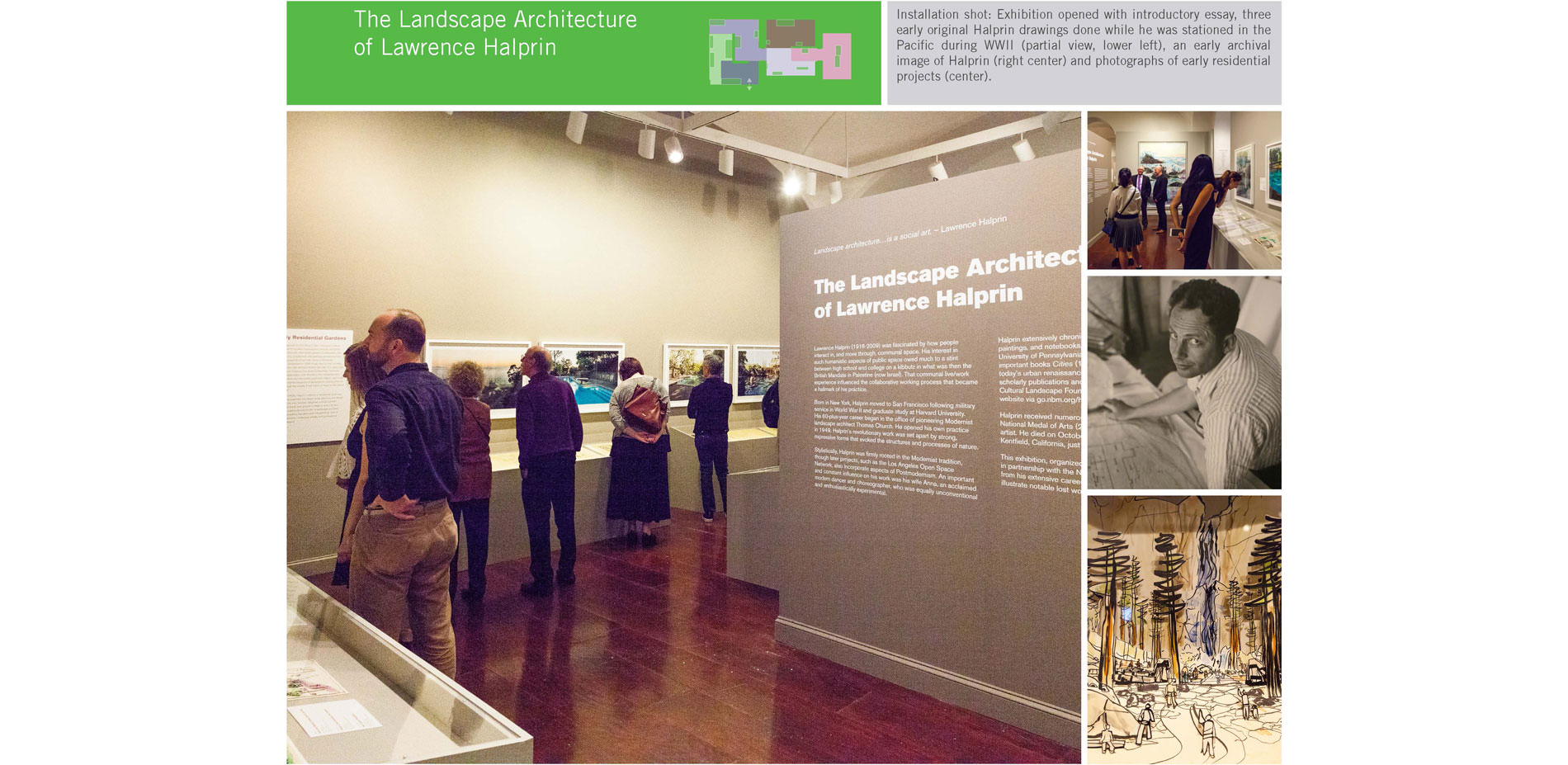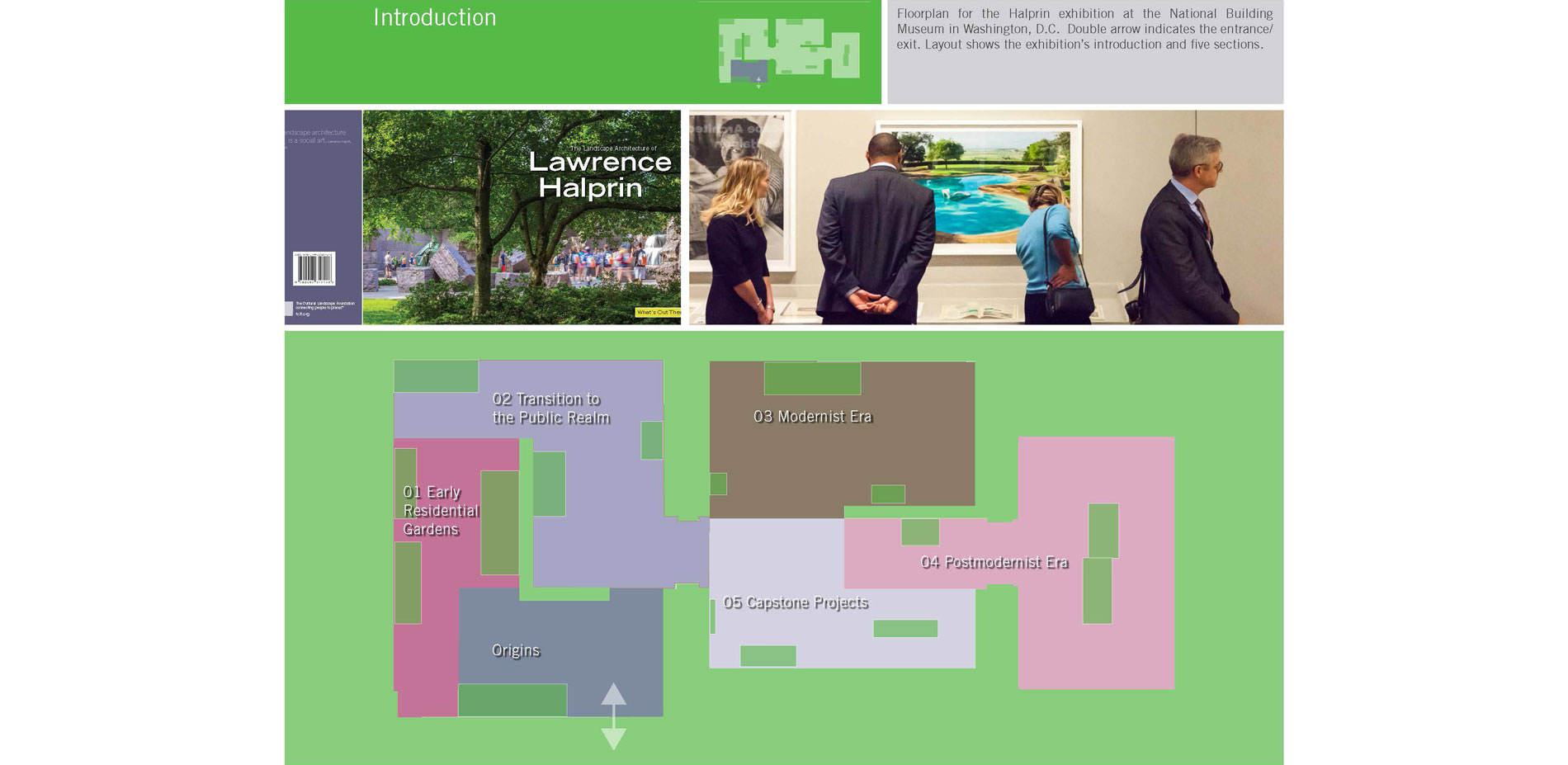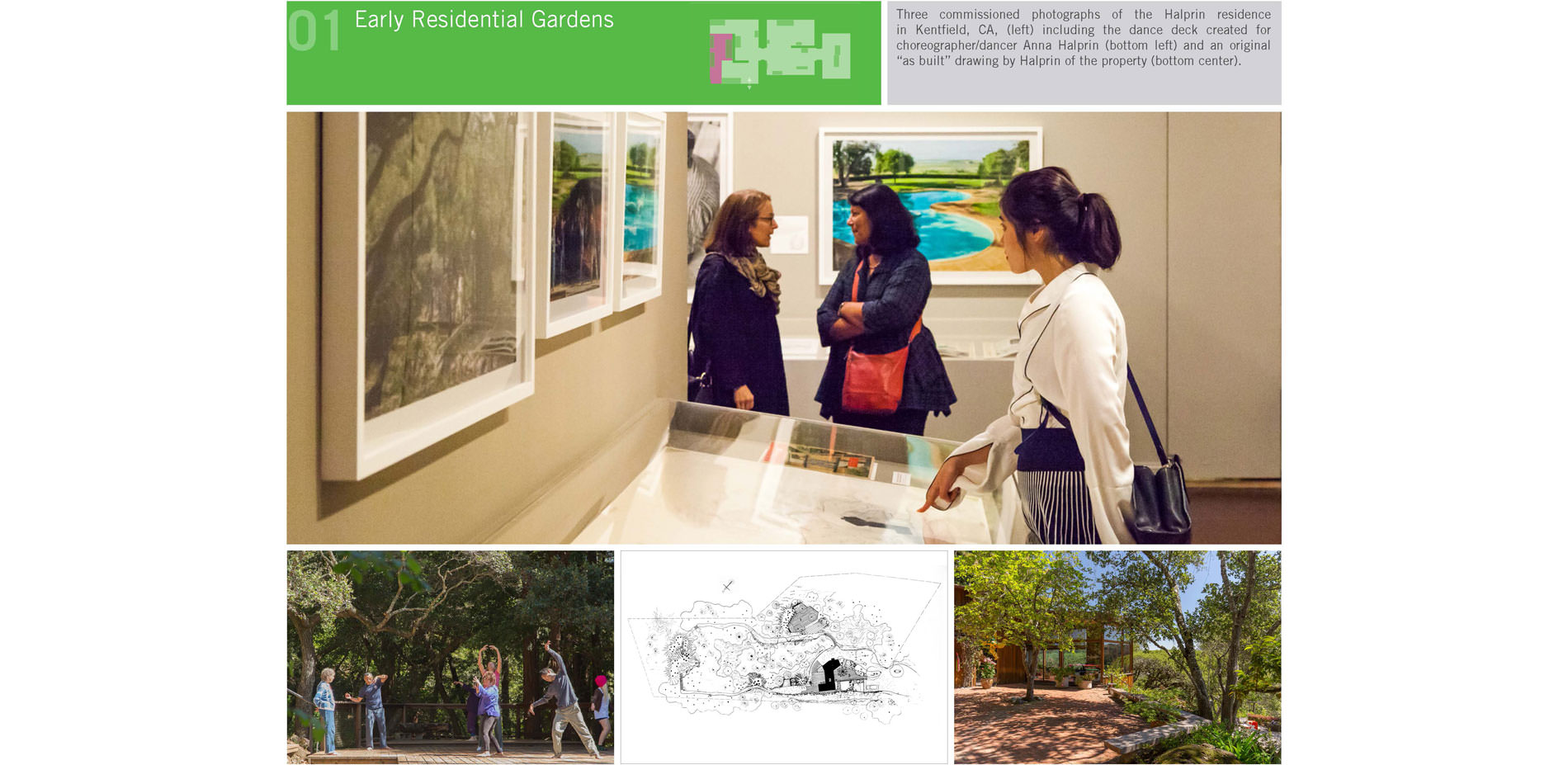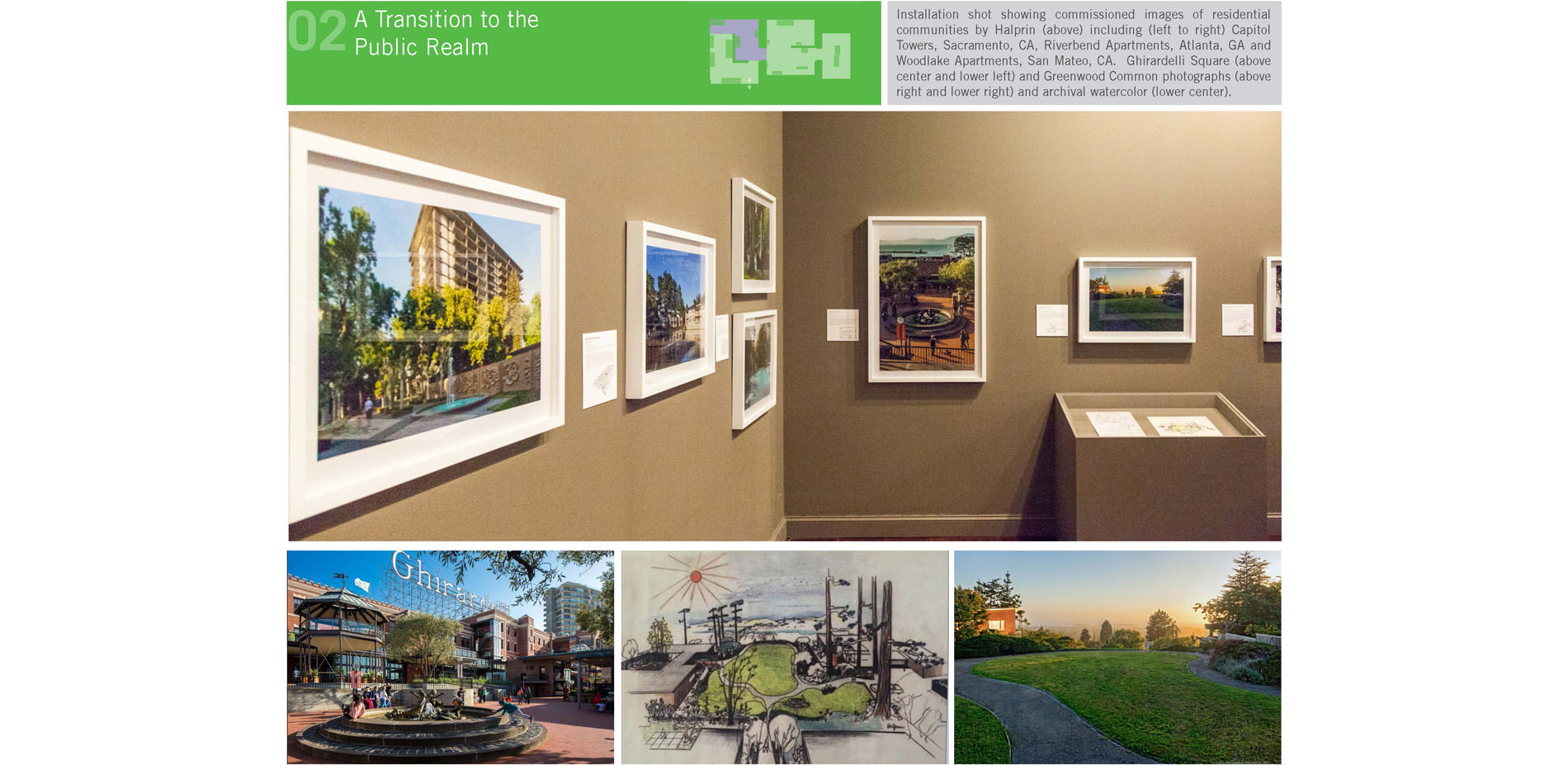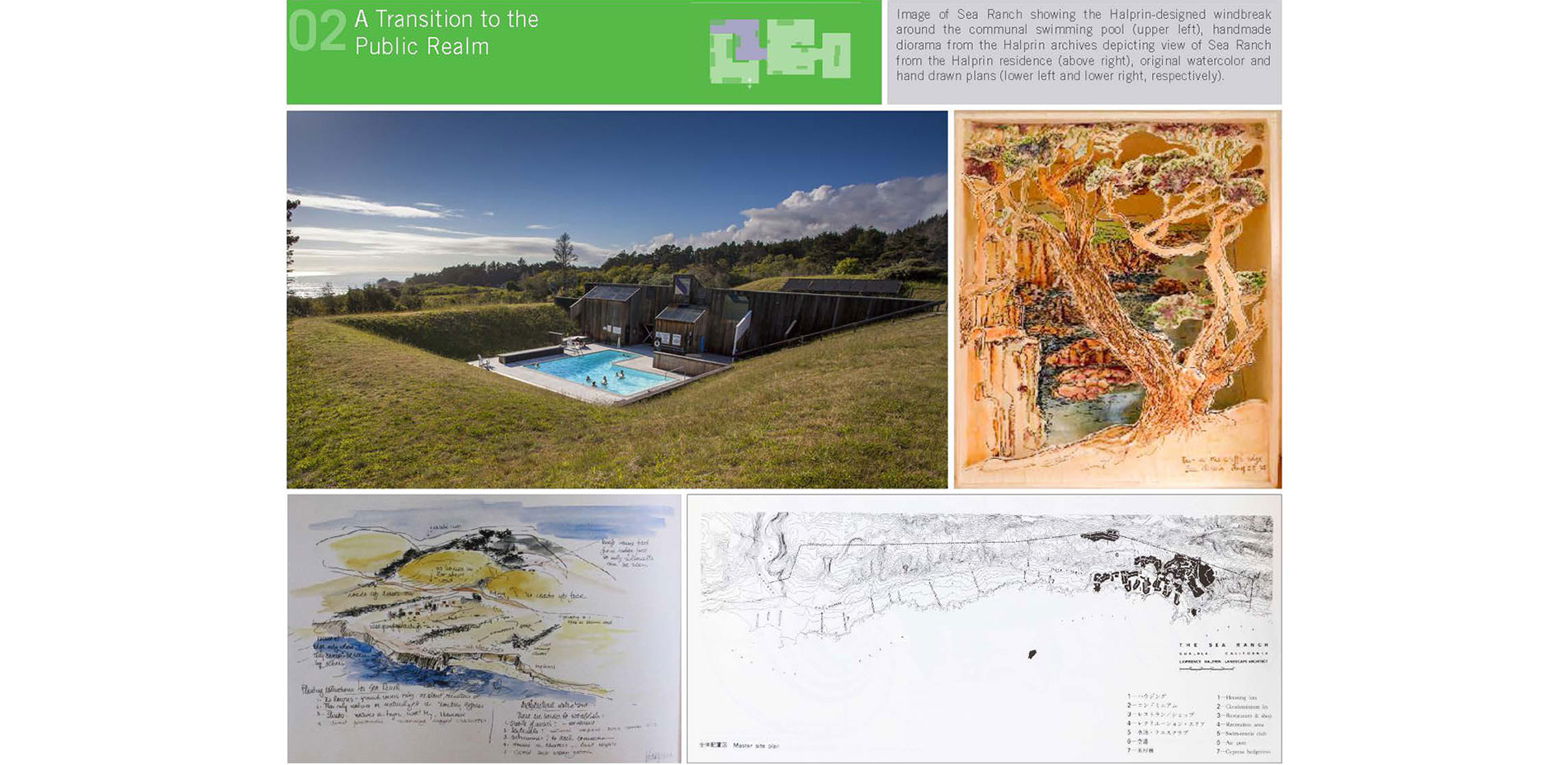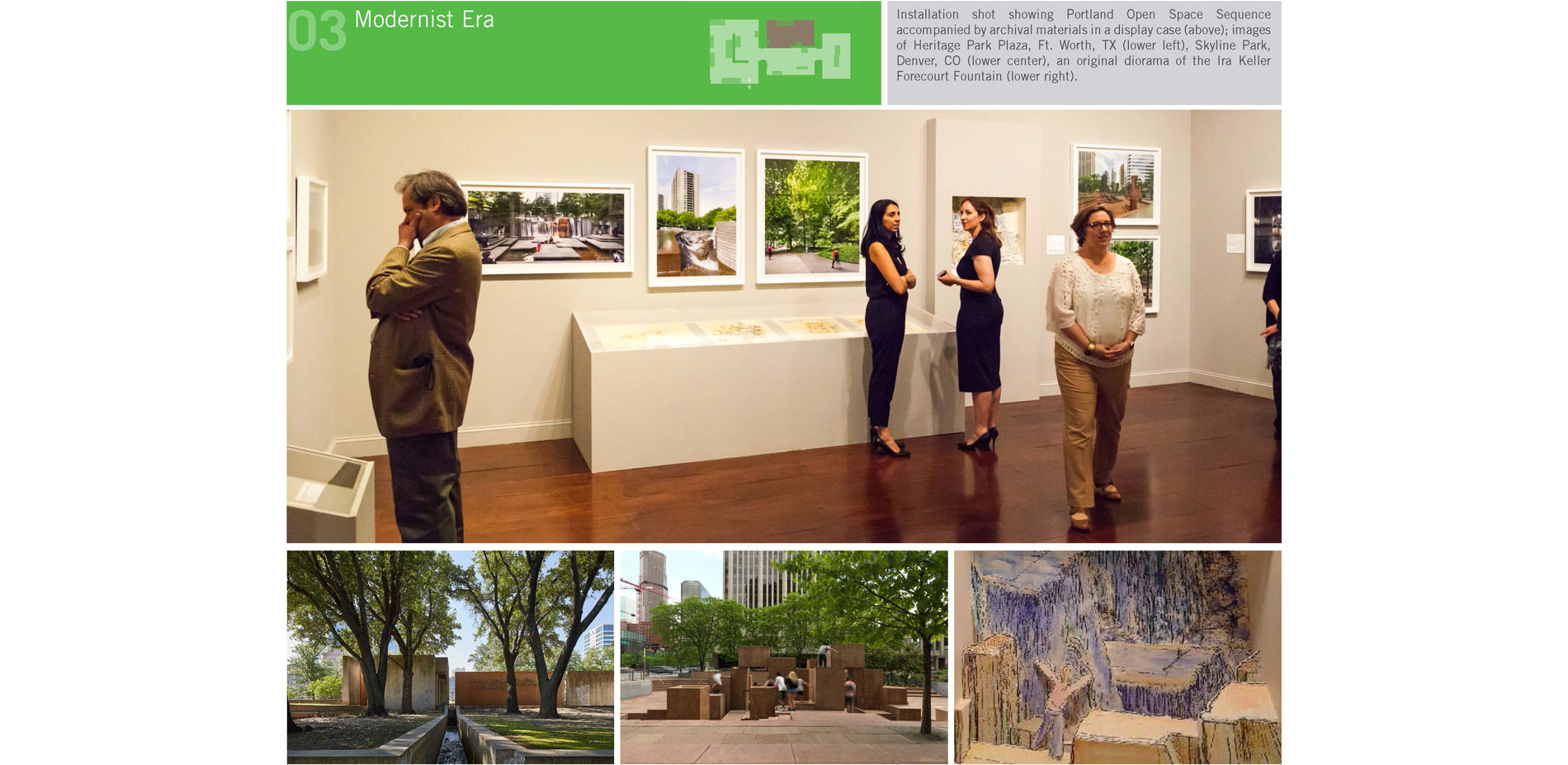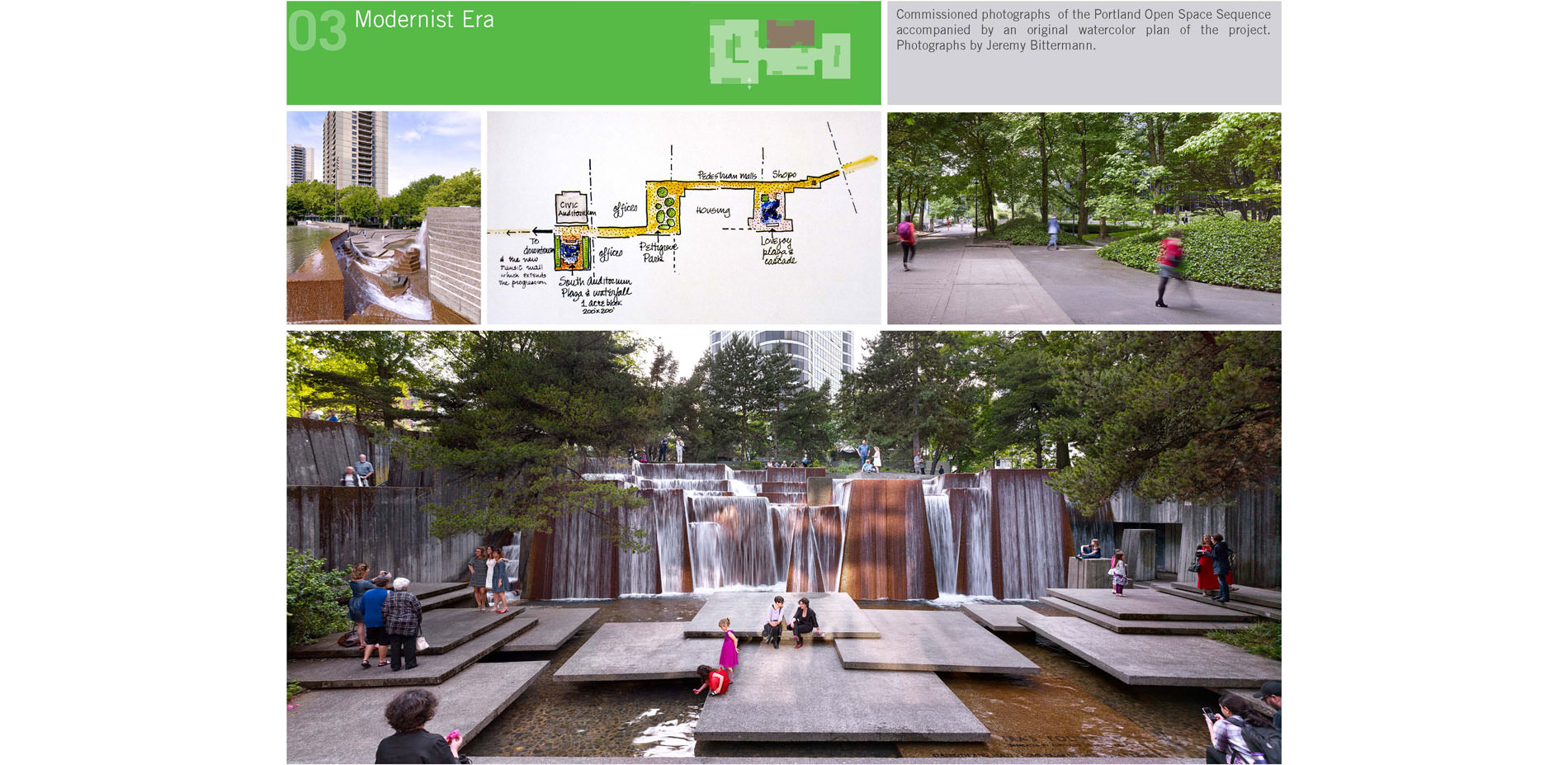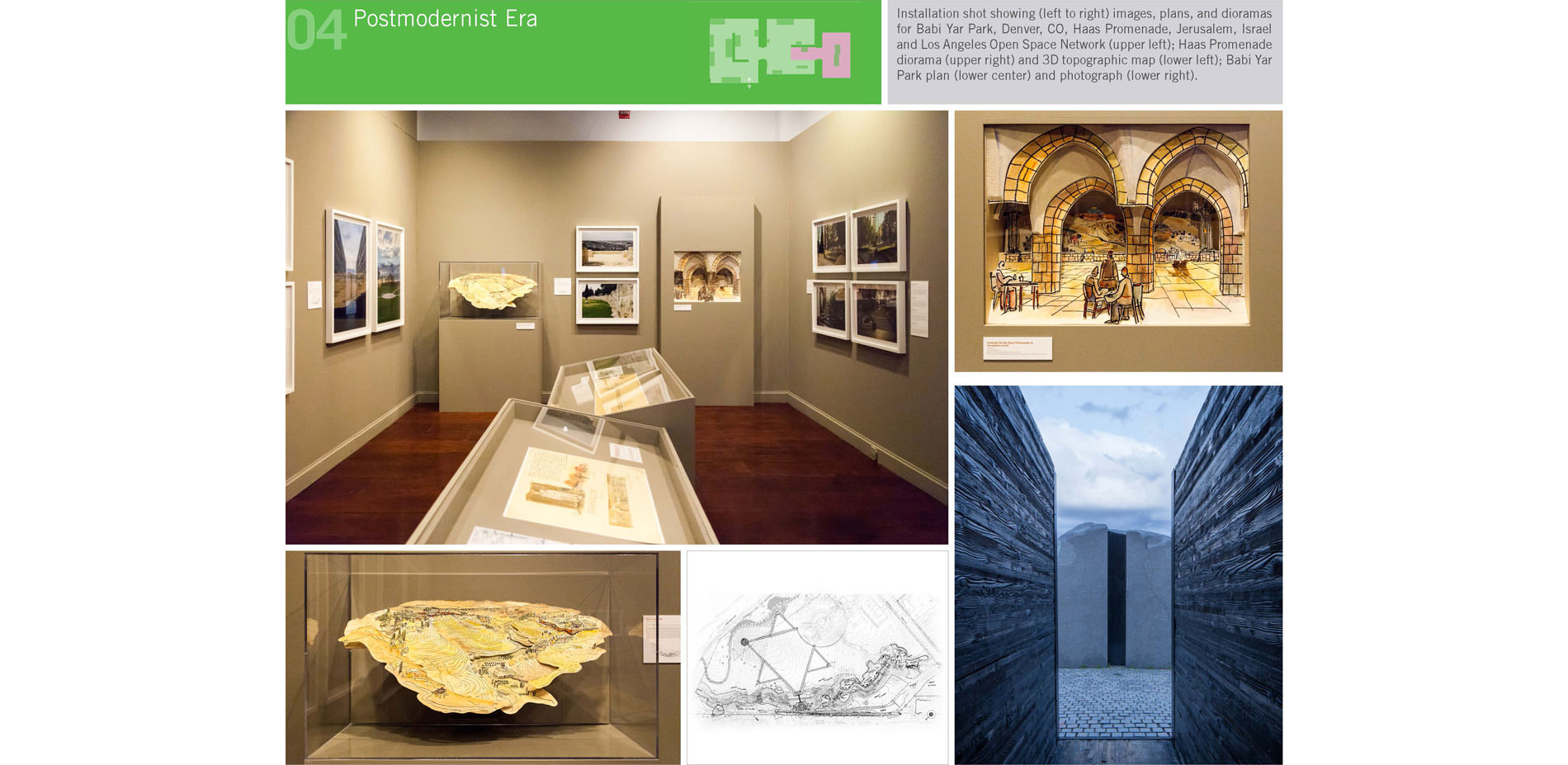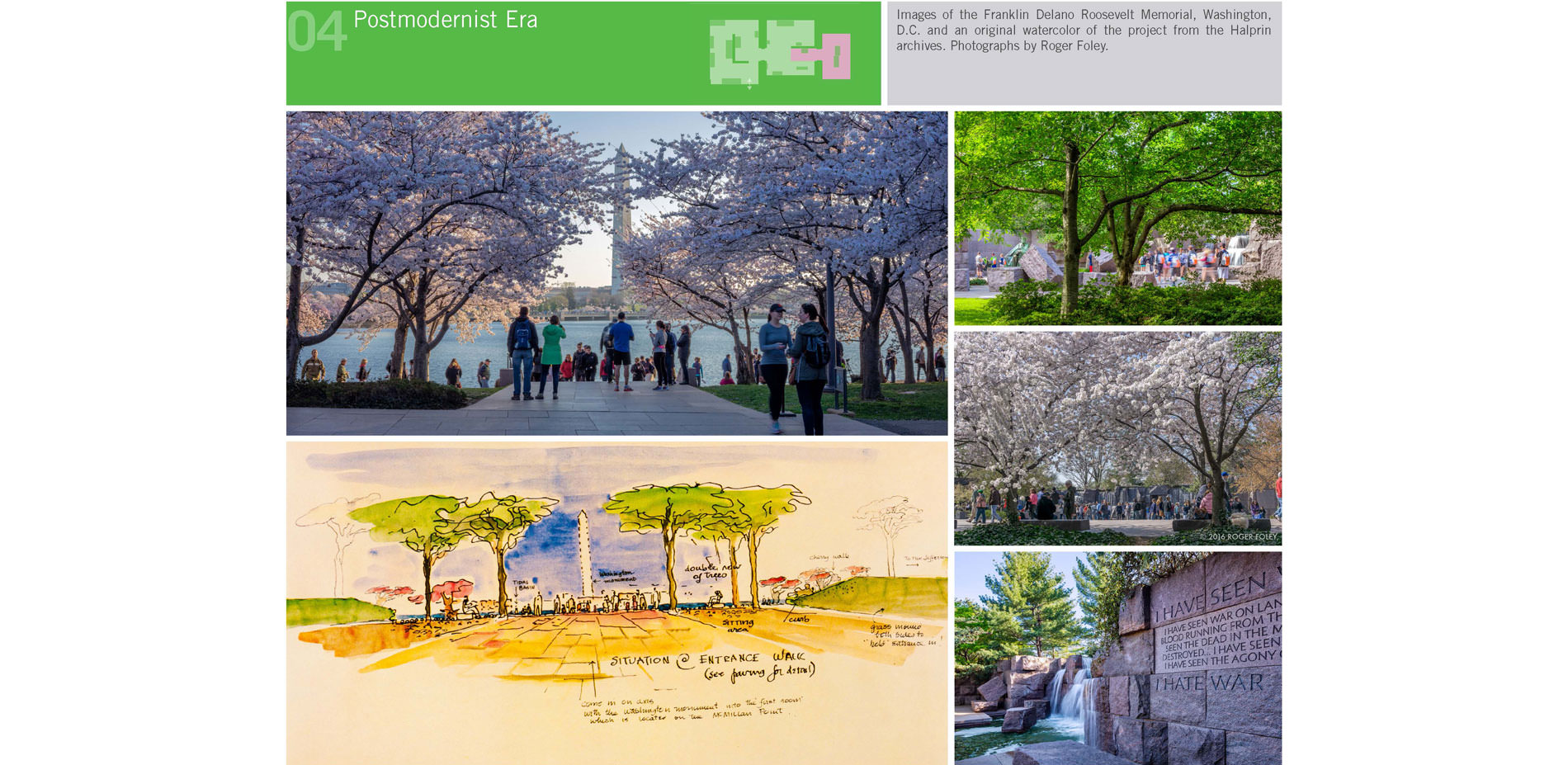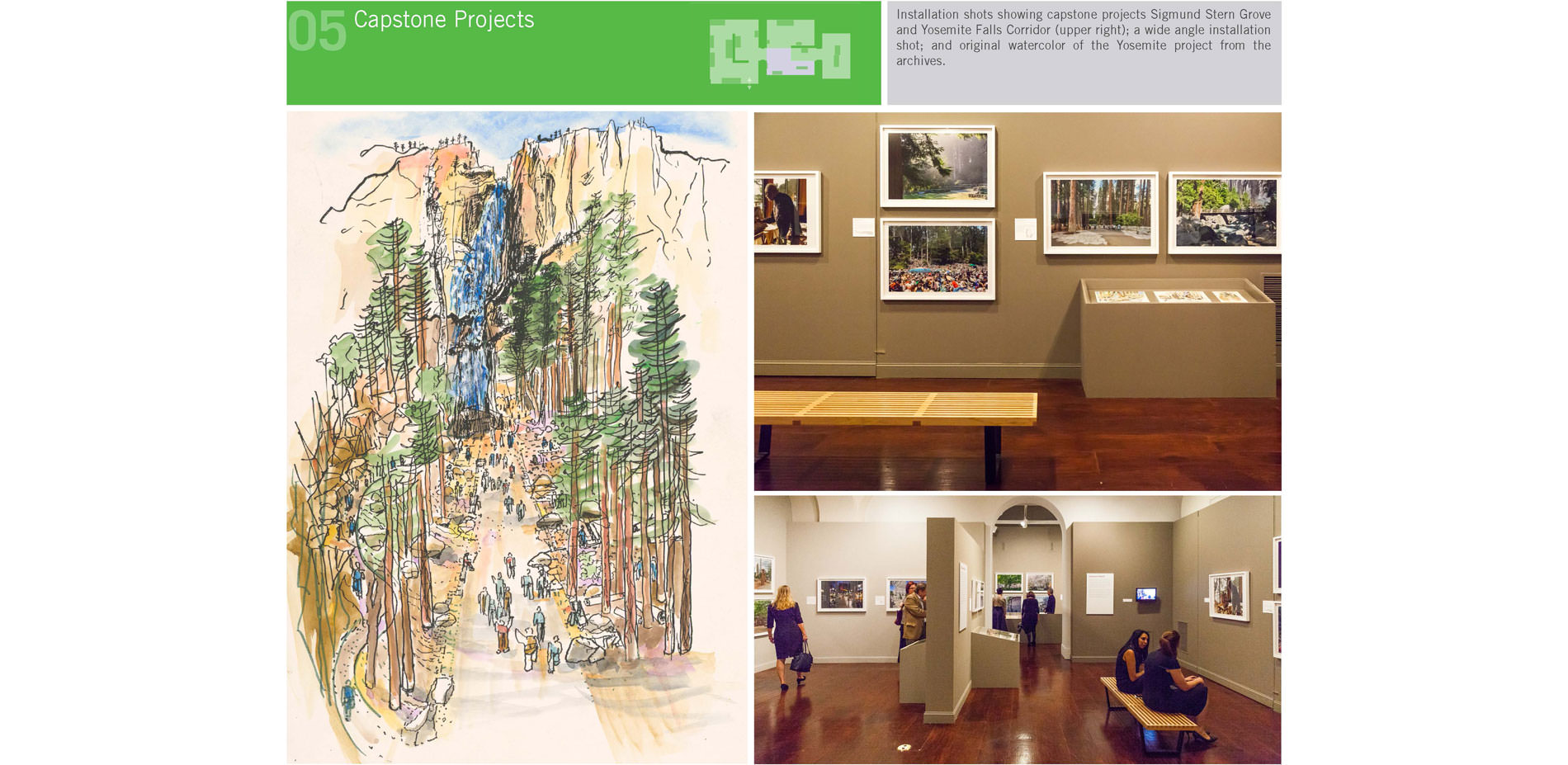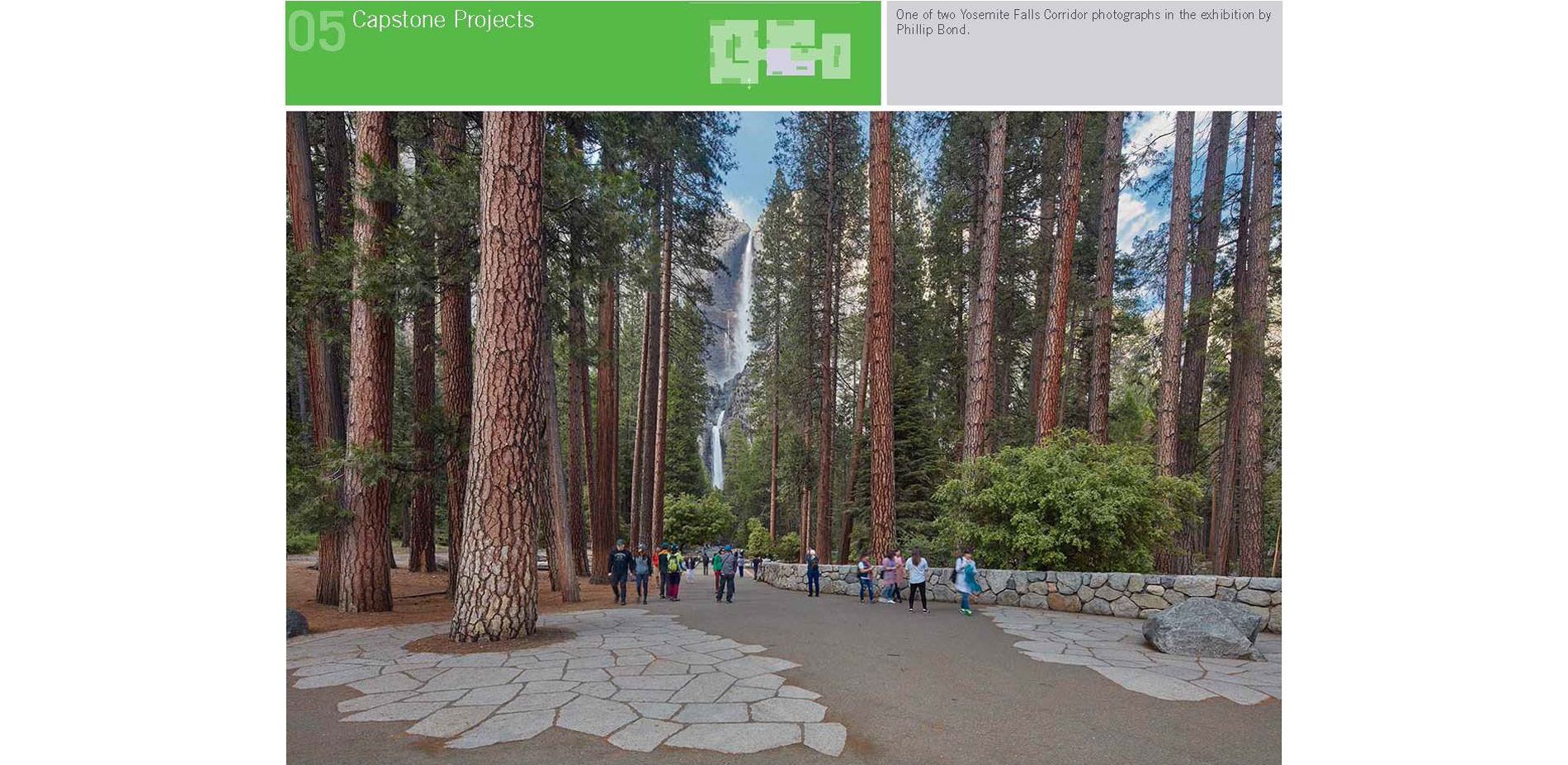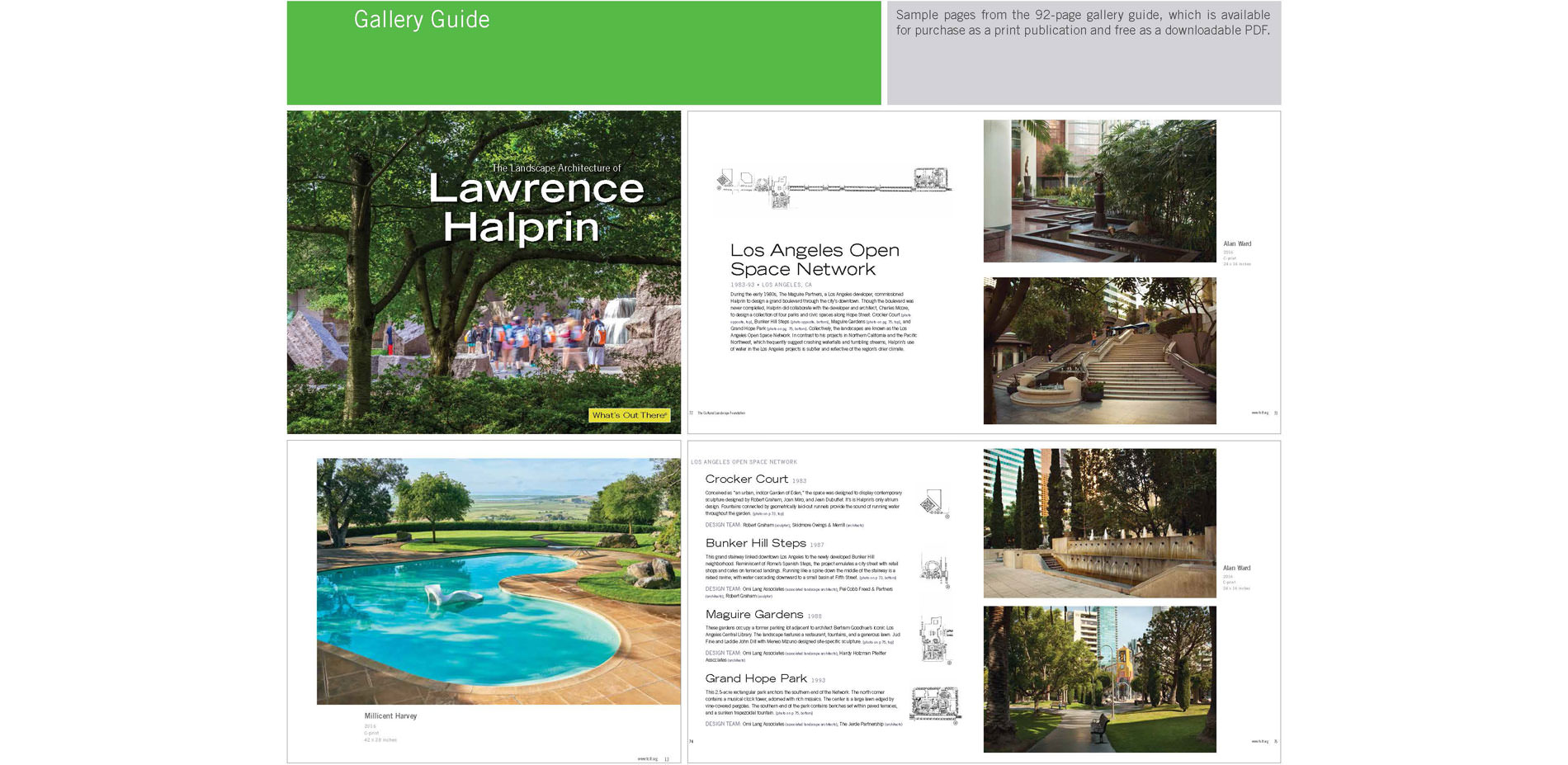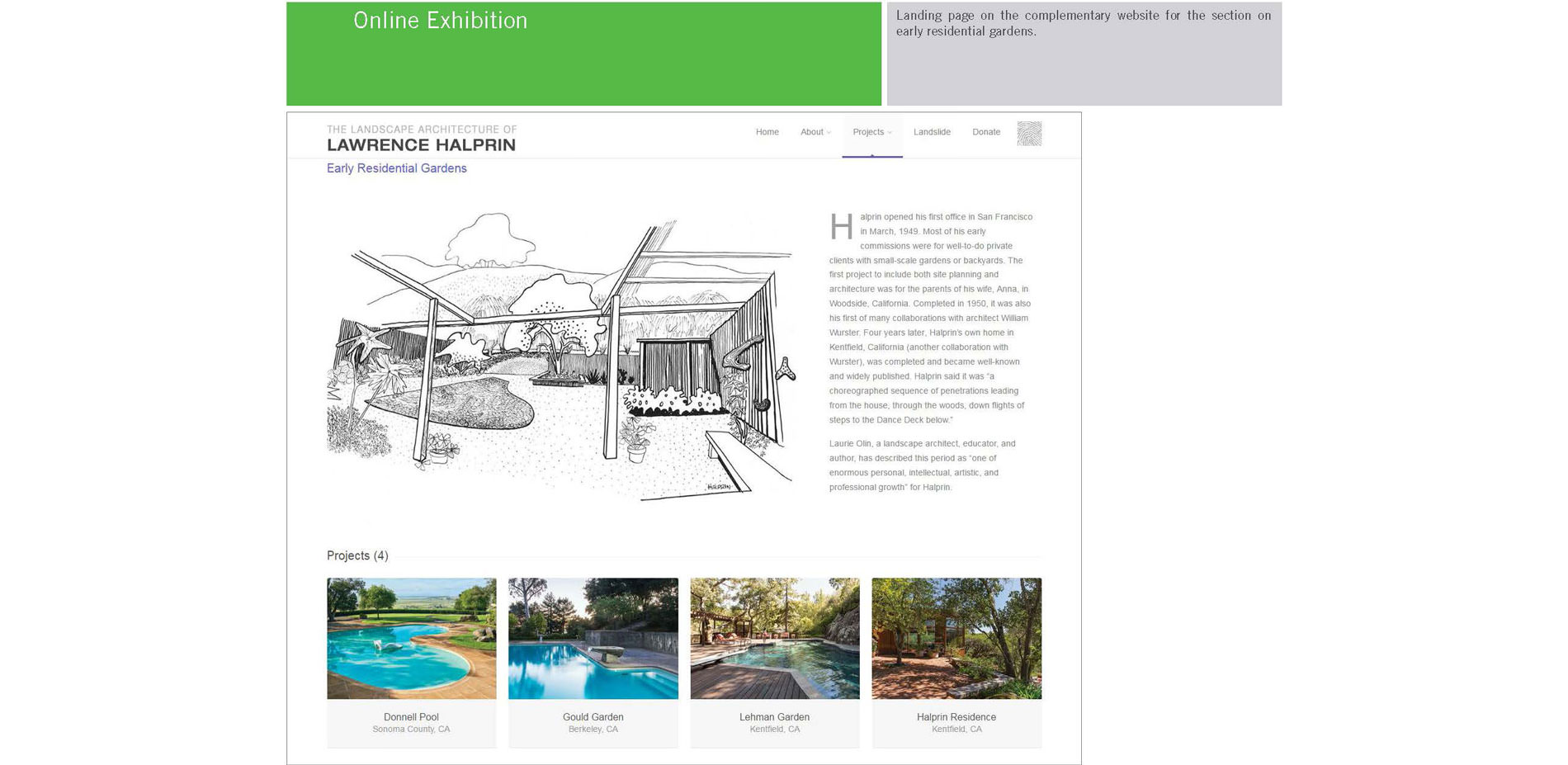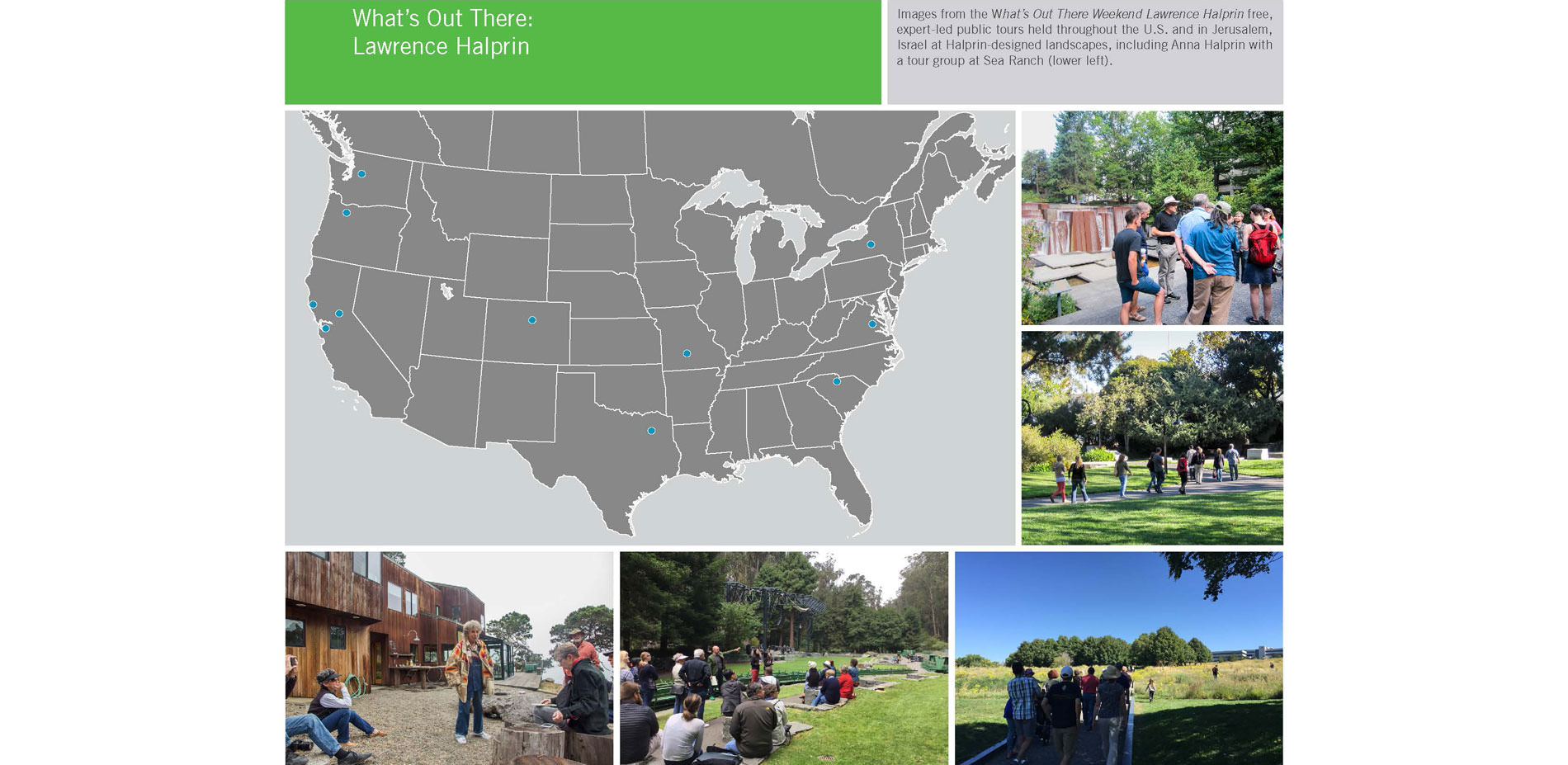The Landscape Architecture of Lawrence Halprin
Honor
Communications
Washington, DC, USA | The Cultural Landscape Foundation
Midcentury landscape is rarely dealt with. Wherever we can grab it, we need to grab it and celebrate it.
- 2017 Awards Jury
PROJECT CREDITS
- Project Lead: Charles A. Birnbaum, FASLA
PROJECT STATEMENT
The Landscape Architecture of Lawrence Halprin traveling photographic exhibition, gallery guide and complementary website chronicles one of the nation’s most significant postwar practitioners, from early residential commissions (including the Donnell Garden for former employer Thomas Church), through five decades of practice concluding with capstone projects in Yosemite National Park and Sigmund Stern Grove in San Francisco. Fifty-five newly commissioned photographs by leading artists document the current state of residential, commercial and civic projects in the U.S. and Israel. The gallery guide includes all of the exhibition photography and narratives, while the website features additional photography, recollections and links to a sections of a video oral history with Halprin. The entire undertaking falls within the organizer’s Landslide program focused on threatened and at-risk landscapes. Significant projects, including the Virginia Museum of Art Sculpture Garden, have been demolished, while others are at-risk or slated for demolition, including Capitol Towers in Sacramento, CA. The exhibition is created for a general audience, and designed to provide an overview of Halprin’s career.
PROJECT NARRATIVE
The Landscape Architecture of Lawrence Halprin traveling photographic exhibition, gallery guide, complementary website and free public tours collectively chronicle one of the nation’s most significant post war practitioners. The exhibition, timed to the centennial of Halprin’s birth in 2016, features 55 newly commissioned photographs of projects from early residential commissions (including the Donnell Garden with former employer, Thomas Church), through five decades of practice concluding with capstone projects in Yosemite National Park and Sigmund Stern Grove in San Francisco completed when he was 89 years old.
The complementary website includes: all of the works in the exhibition as well as additional photography and information about each site; links to a video oral history with Halprin; an extensive written biography; written and videotaped recollections from colleagues; written biographies of ten major collaborators (including Satoru “Sat” Nishita, Jean Walton, Richard “Viggie” Vignolo, and others); a ranking of the present condition of all of the publicly accessible sites; and additional references and resources. The 92-page gallery guide is available for purchase in a printed version and for free as a downloadable PDF.
Since Halprin is beloved within the profession (his friend and colleague Richard Haag wrote: “He became a cult figure”), the goal of the exhibition is to provide an overview of his extensive career that is accessible to a broad audience, along with opportunities to gain a deeper understanding through the complementary website and other resources. The exhibition also seeks to leverage the growing interest in Halprin’s legacy evidenced by the Halprin Conservancy in Portland, OR, public support for rehabilitation of Heritage Park Plaza in Fort Worth, TX, which had been threatened with demolition, and attendance at free, expert-led tours of Halprin projects in more than a dozen cities (curated by the organizers of the exhibition).
The exhibition is also relevant because it coincides with a renaissance in urban centers throughout the U.S. In his day, Halprin gave people reasons to come back to cities, to stay in cities, and to be part of cities. He empowered these people by making them part of the design process through workshops and bottom-up processes that allowed them to influence the shape of their own neighborhoods. The exhibition provides context for the current resurgence by illustrating the pioneering work Halprin did.
Following an introduction, the exhibition is divided into five sections that chronicle the evolution of Halprin’s career from small-scale residential to large-scale public commissions: [1] early residential projects including the Halprin residence in Kentfield, CA with the iconic outdoor dance deck Halprin created for his wife, the choreographer/dancer Anna; [2] transition to the public realm, with projects including Hebrew University in Jerusalem, Ghirardelli Square in San Francisco, and Sea Ranch, the important coastal community north of San Francisco; [3] modernist projects including Freeway Park in Seattle, the first “capped” park over a freeway, the Portland Open Space Sequence, and Denver’s Skyline Park, now partially demolished; [4] postmodernist work including Levi’s Plaza in San Francisco, the Franklin Delano Roosevelt Memorial in Washington, D.C., and a series of projects in the Los Angeles area; and, [5] two of the three capstone projects that opened when Halprin was 89 years old, Sigmund Stern Grove in San Francisco and the Yosemite Falls Corridor at Yosemite National Park.
The exhibition debuted at the National Building Museum in Washington, D.C., and for that venue the organizers also secured artifacts from the Halprin archives at the University of Pennsylvania, including original drawings, photographs, plans, shadowbox dioramas, and other items. The exhibition will travel for the next three to five years, beginning at the Palace of Fine Arts in San Francisco followed by the A+D, Architecture and Design Museum in Los Angeles; however, the artifacts from the archives were only shown in Washington, D.C. Fortunately, an online virtual tour is available: https://my.matterport.com/show/?m=GhDiBFwPkKh
Visitors to the exhibition learn that Halprin, influenced by the Great Depression, Franklin Delano Roosevelt, and New Deal-era programs that provided social relief, believed he could and should contribute to the greater good. Inspired by Works Progress Administration projects that created innovative parks and parkways, Halprin wanted to improve the lives of urban dwellers during a period when many people were fleeing cities and new highways were destroying older neighborhoods.
Expanding upon the lofty ambitions pioneered by Frederick Law Olmsted, Sr. (a Halprin hero) in park making and city shaping, Halprin propelled these ideas forward in an age of Modernism – both in his built works and his influential treatises Cities (1963) and Freeways (1966). The exhibition’s photographs and narrative demonstrate that Halprin invented new types of landscapes that were dynamic: environmentally sensitive communities, capped freeways, commemorative parks, and grand open space networks that were carved into declining infrastructure. Halprin’s landscapes, visitors learn, can feel intimate or heroic – and at the Portland Open Space Sequence, those experiences are separated by a couple of blocks. Halprin, like Olmsted, took us on scenographic journeys, but unlike Olmsted, Halprin’s landscapes were inspired by, not imitative of, nature; and his distinct design language was rich in meaning and symbolism.
Nationally celebrated photographers (who all donated their time and work) documented some 30 examples of Halprin’s extant legacy. This includes Ren Dodge’s exuberant photographs of swimmers in the signature pool at the Lehman Garden in Kentfield, CA; the monumental landform that functions as a windbreak at the Sea Ranch Recreation Center captured by Saxon Holt; and the full explosion of cherry tree blossoms and exuberant crowds at the FDR Memorial in Washington, DC as shot by Roger Foley. Other acclaimed photographers who participated include Marion Brenner, Tom Fox, Millicent Harvey, Gordon Osmundson, Alan Ward, and many more. The exhibition has received very positive attention from general interest media, including a full page in the New York Times Sunday Arts & Leisure section and half page in the main section of the San Francisco Chronicle, as well as influential news websites such as Curbed and DC-ist, and design-focused media including Landscape Architecture Magazine, Architect Magazine, Dezeen and others, collectively reaching the general public along with those more directly interested in the built environment.
The Landscape Architecture of Lawrence Halprin exhibition is presented within the context of the organizer’s Landslide program, which brings attention to nationally significant works of landscape architecture and landscape features that are threatened and at-risk. Several significant projects, including the sculpture garden at the Virginia Museum of Fine Art in Richmond, VA, have been lost, while others, such as Skyline Park in Denver, CO, have been substantially altered or, like Capitol Towers in Sacramento, CA, are threatened with imminent demolition. A primary goal of the exhibition, gallery guide and this website is to make Halprin’s legacy visible and valued, and to promote a dialogue that will lead to informed stewardship.
